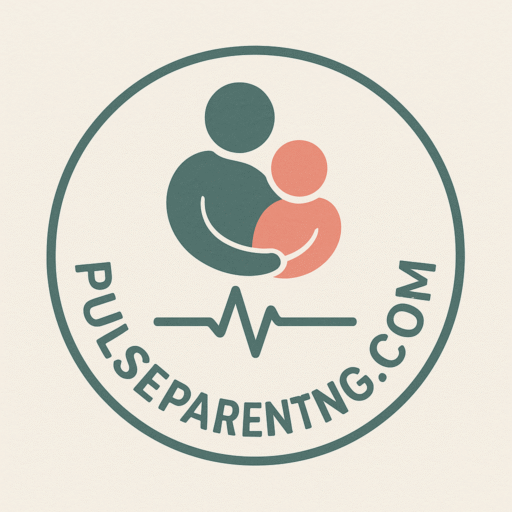Adolescence is a time of rapid growth and change—emotionally, socially and cognitively. According to the World Health Organization (WHO), about 1 in 7 adolescents globally experience a mental disorder, and social, academic and identity-challenges are all part of the picture. UNICEF DATA+2World Health Organization+2
For parents, it can sometimes feel like you’re trying to support a constantly-shifting person. To help, we’ve created 10 teen profiles that capture common patterns of behavior, motivation and challenge. The goal is not to label your teen permanently, but to help you better understand how they’re experiencing this time, and how you can show up in helpful ways.
1. The Stressed High Achiever
What you’ll see: A teen who strives for “top grades,” extracurricular overload, frequent worry about performance, difficulty relaxing.
Why it matters: High expectations + perfectionism can lead to anxiety, sleep issues, burnout. Research links school-stress and emotional distress in teens. College of Coastal Georgia+1
How parents can help:
- Emphasize effort and growth rather than just outcome.
- Build in “downtime” that is non-academic.
- Have conversations like: “What did you enjoy today?” not “What did you achieve?”
2. The Identity Explorer
What you’ll see: A teen curious about who they are—changing styles, trying new hobbies, questioning beliefs. They may be trying on different social circles, tweaking their appearance, or exploring values.
Why it matters: Adolescence is a prime period of identity formation; confusion or feeling “in-between” can lead to insecurity. PMC+1
How parents can help:
- Create a safe space for experimentation (“Try that.” “Tell me what you like.”).
- Ask open-ended questions: “What’s something about you that surprised you this week?”
- Avoid judgement when they change their mind or try something new.
3. The Social Butterfly
What you’ll see: A teen who lives for friends, social events, group chats, and social media; energized by connection.
Why it matters: While social connection is protective, there can be risk of peer-pressure, fear of missing out (FOMO), distraction from responsibilities. Research shows heavy reliance on peer feedback can stress teens. NIH MedlinePlus Magazine+1
How parents can help:
- Encourage offline connection too (walks, small gatherings).
- Help them reflect: “How did it feel being at the party/group today?”
- Talk about boundaries and balance: “It’s okay to say no.”
- Limit and co-monitor screen use around friends and social media.
4. The Quiet Observer
What you’ll see: A teen who is introspective, prefers solitude or one-on-one rather than big groups, often thoughtful and reserved.
Why it matters: Introversion is entirely normal—yet in a world of loud voices and constant social media, a quiet teen may feel overlooked or pressure to “be more outgoing,” which can lead to low self-esteem or isolation.
How parents can help:
- Respect their need for downtime alone—quiet is recharging, not a problem.
- Invite low-pressure social engagement (“Do you want to invite just one friend over?”).
- Encourage small wins: recognizing their unique strengths (listening, reflection) rather than pushing extroversion.
5. The Emotionally Reactive Teen
What you’ll see: Mood swings, intense feelings, frequent frustration or outbursts, or deep hurt. May react quickly or have strong emotional responses.
Why it matters: Teens’ brains are undergoing major developments in emotional regulation. Without tools, strong emotions can feel overwhelming. According to data, emotional distress and mood challenges among adolescents are rising. Frontiers+1
How parents can help:
- Stay calm and model emotional regulation yourself (you don’t have to have all the answers).
- Teach simple coping tools: pause, breathe, step away, name the feeling.
- After big emotions have passed: “What was underneath all of that?” not just “Why did you do that?”
6. The Screen-Immersed Teen
What you’ll see: Gaming or social media dominate their free time, often late into the evening, frequent device use, maybe more comfortable online than offline.
Why it matters: Research shows links between excessive screen/social media use, poor sleep, reduced physical activity, and increased risk of anxiety or depression. Yale Medicine+2CDC+2
How parents can help:
- Co-engage: play games or browse social media with them sometimes, to build connection.
- Set gentle “technology boundaries” like device-free dinner, earlier screen curfew.
- Encourage offline activity and good sleep hygiene.
- Validate the appeal of digital: “I see why this is fun/important to you” so you’re not just telling them “stop.”
7. The Sensitive Empath
What you’ll see: A teen highly attuned to others’ feelings, often taking on others’ emotional burdens, wants peace and harmony, dislikes conflict.
Why it matters: While emotional sensitivity is a strength, it can become draining or overwhelming if the teen neglects their own needs. Empathy fatigue is real.
How parents can help:
- Recognize and verbalize: “I see how much you care about your friend’s feelings.”
- Teach healthy boundaries: “It’s ok not to carry everything for others—your feelings matter too.”
- Encourage self-care: “What did you do for you today?”
- Offer reflection: “How did that make you feel?” not just “How did that make them feel?”
8. The Pragmatic Realist
What you’ll see: A teen who is logical, solution-oriented, sometimes emotionally reserved, prefers order and structure, maybe skeptical of “feelings talk.”
Why it matters: While being pragmatic is valuable, in adolescence it can mean emotions get sidelined, or rigidity sets in. A balanced teen thrives when they can integrate thought and feeling.
How parents can help:
- Find ways to open emotional door: “What’s one feeling word that would describe today?”
- Do “structured fun” together: logic-based games, planning something enjoyable.
- Celebrate flexibility and experimentation, not just “right” answers.
- Don’t dismiss their logic—use it as a bridge to emotional reflection.
9. The Creative Dreamer
What you’ll see: A teen overflowing with ideas, imagination, artistic bent, sometimes scattered, easily bored by routine, maybe procrastinates.
Why it matters: Creativity is a huge asset—but it comes with challenges: unfinished projects, self-doubt (“Is this good enough?”), and difficulty with structure.
How parents can help:
- Offer “creative time” without pressure, celebrate process not product.
- Help them translate ideas into manageable steps (“You have this great idea—what’s the first 10-minute action?”).
- Provide some structure: deadlines, check-ins, visual boards.
- Enjoy and share their creations—validation matters.
10. The Resilient Helper
What you’ll see: A teen who often takes on responsibility: family roles, friend support, caring for siblings, or acting as mediator. They’re dependable, often adult-like.
Why it matters: Responsibility is admirable—but when it eclipses their own needs, the teen may burn out, feel unseen, or struggle with identity beyond “caretaker.”
How parents can help:
- Tell them directly: “Thank you for helping, and I want you to also take care of you.”
- Carve out “you time” for them—time when they are not the helper.
- Encourage variety of identity: “You’re more than your role of helper. What do you want?”
- Monitor for signs of stress or rescue burden—they may not ask for help.
Why This Matters
The statistics are sobering: in the U.S., 40% of high school students reported persistent feelings of sadness or hopelessness in the last year. CDC+1 Globally, mental health conditions account for a large portion of adolescent burden of disease. PMC+1 What this means: parents are both needed and empowered in ways they may not realize. Understanding your teen’s profile can help you tailor support rather than default to generic advice.
Tips for Parents
- Pick one or two of these profiles that most resonate with your teen. They may shift, combine, or change over time—and that’s okay.
- Use curiosity, not judgement: Ask open questions, listen, show up.
- Offer routines that meet the teen where they are. You don’t have to “fix” everything—your presence, stability and interest matter more than you think.
- Seek professional help if you see consistent signs of distress (changes in sleep, mood, energy, school drop-off, talk of self-harm).
- Look after you, too. A healthy parent supports a healthy teen; neglecting your own well-being makes it harder.
Final Thought
There’s no single “correct” way to be a teen. Each of these profiles highlights strengths and challenges. As a parent, your greatest role is connection—and walking alongside your teen through uncertainty, change and growth. When you understand who they’re being right now, you can offer the what they need. And that small shift—seeing the teen clearly, valuing their experience—makes a big difference.

